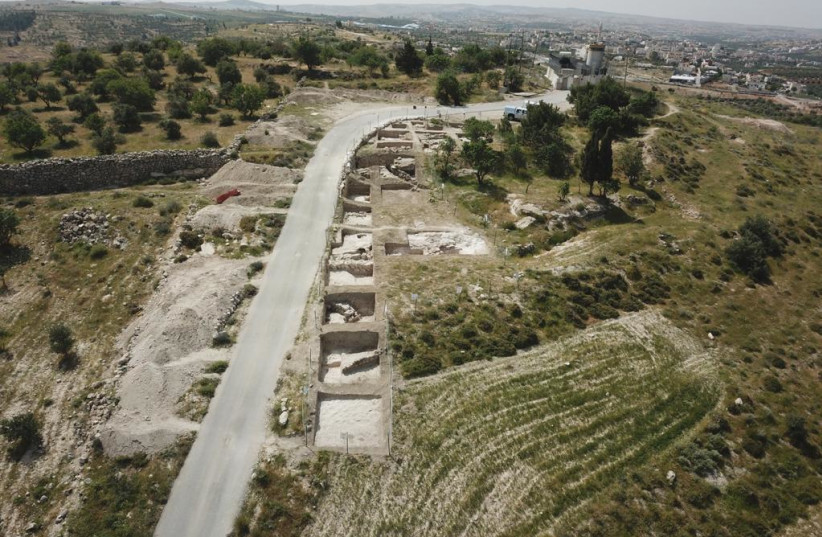A lead projectile dating back to the times of the Maccabees was discovered by the Civil Administration’s Archaeological Department on Sunday.
The 3 cm. projectile carries the name of Diodotus Tryphon, a Hellenist king who reigned over the Seleucid Empire from 142-138 BC.
A symbol representing Zeus, the ancient Greek religion's king of the gods, is also etched onto the projectile.
The projectile was discovered at Zif, an archaeological site in South Hebron Hills.

Tryphon is known for the assassination of Jonathan, one of Mattathias' sons, Judah Maccabee's successor as leader of the Maccabees and High Priest of Judea.
Jonathan was the younger brother of Judah Maccabee, who led the Maccabean Revolt against the Seleucid Empire in 167-160 BC after King Antiochus IV Epiphanes issued decrees forbidding Jewish religious practice.
After restoring Jewish worship at the Second Holy Temple in Jerusalem, leading to its rededication — Which is celebrated on Hanukkah — Judah Maccabee appointed Jonathan as High Priest. He eventually became Maccabee's army commander following the death of Judah.
"We continue to discover new findings that add to the rich history that took place in the West Bank hundreds and thousands of years ago," said Civil Administration Archaeological Department officer Hananya Hizmi.
